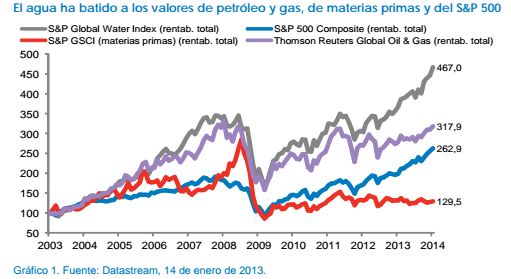Thanks to the Greek finance minister’s background as an academic of game theory, everyone is trying to figure out what game the Greek governing party, Syriza, is trying to play. As it looks like Greece is hurtling headlong towards disaster, the most commonly used example is the game of chicken, where two drivers race towards a cliff and the loser is the one who swerves away first (see Economist Insights, 21 May 2012). Unfortunately, the game of chicken all too often ends with both drivers plunging over the cliff to their doom, say Joshua McCallum, Head of Fixed Income Economics, and Gianluca Moretti, Fixed Income Economist, UBS Global Asset Management in an Economist Insigth.
At first this sounds like a great analogy, but there is a big problem with the comparison. While Greece would end up in intensive care if it goes over the cliff, the rest of the Eurozone would probably just come out feeling bruised. The market clearly thinks so: while spreads on Greek government bonds have risen, those on other periphery countries moved only marginally.
If the risks are so unbalanced –say the economists- why is Syriza playing such a risky game? One reason is that Syriza is not only interested in the other driver, but is also paying a lot of attention to the spectators. Syriza had promised Greek voters that they could both keep Greece in the Eurozone and also roll back the austerity and reform measures as well as reduce Greece’s level of debt. Unfortunately for Syriza this dual mandate is turning out to be mutually exclusive. Yet a failure to achieve either of these objectives could lead to a political crisis and even cause the government to fall.
The best survival strategy for Syriza is thus to wait until the last minute to swerve. Swerving too early would be seen as failure, but by swerving only at the last minute they can blame the rest of the Eurozone for being too uncompromising. And there is always the hope that the Eurozone capitulates and swerves first. But most important are the internal politics: even if Prime Minister Tsipras strikes a deal with other Eurozone leaders today, he will need to put it through the Greek parliament. And this means getting it past the far left wing of the Syriza party. This wing of the party has taken a much harder stance against the Eurozone, and would likely have been after Mr Tsipras’ blood if he had struck a compromise deal too early, UBS Global Asset Management experts note.
For Mr Tsipras to strike a deal and still survive politically, he needs to do it at the last minute. In short, he needs to do what he has just successfully done: bring about a ‘take-it-or-leave-it’ ultimatum from the Eurozone. That way he can present the deal as the best that he can get, and effectively he can turn the parliamentary vote on the deal into a referendum on continued membership of the Eurozone. To vote against the deal, the left wing of Syrzia would effectively be voting to leave the single currency. Yet the general public still strongly supports continued membership of the euro, and this way Mr Tsipras can make the electorate, and his party, understand that the dual mandate they presented him with is now mutually exclusive.
The people of Greece are becoming ever more worried about the possibility of ‘Grexit’-they add-. They are withdrawing money from bank accounts in ever greater amounts, to avoid both capital controls and the re-denomination risk of having their euros forcibly converted into a new Greek drachma. Between December and April, more than EUR 25 billion of deposits were withdrawn from Greek banks (see chart), equivalent to more than 15% of the total. And the pace of outflows has increased in the last couple of months.
Not only have Greek banks had to cope with deposit withdrawals, but their lines of credit with other banks in the Eurozone are also being withdrawn. That leaves the Greek banks almost entirely reliant on the European Central Bank (ECB) to provide them with Emergency Liquidity Assistance (ELA). Under this programme, the Bank of Greece is authorized by the ECB to provide cash to Greek banks as long as they post collateral. But this still means that the Bank of Greece (and indirectly the ECB) is taking on a lot of risk. If no deal is reached, and Greece cannot make its payments due later this month, then the ECB may be forced to withdraw emergency liquidity. That would probably force the Greek banks to shut down for as long as the situation drags on.
If Greece is forced to impose capital controls, it will probably be because the ECB has suspended ELA assistance to the Greek banks. So the banks might not even have enough cash available to meet the limited withdrawals allowed. The banks would run out of money very quickly and would likely have to shut, leaving the population without access to their deposits. The immediate consequences for the economy would be catastrophic.
A new currency might quickly improve Greek competitiveness as it would depreciate rapidly, but it is not clear that it would solve all of Greece’s problems. Even if Greece decides that it wants to default on its debt, this is not for Greece to decide on its own. Most of Greece’s debt is in the form of bilateral loans, not bonds, and there is no default without the agreement of the creditor. The IMF, for one, will not forgive the debt: Greece will simply be seen to be in arrears, and will accrue interest. The rest of the Eurozone may demand payment as well, limiting Greece’s ability to engage in trade or interaction with the rest of the world for fear of having its assets seized. And if Greece is now earning in a foreign currency, it will be even harder to pay off its debts.
The ECB could be facing the greatest losses. The ECB holds EUR 27 billion of Greek debt, and it is further exposed through the bank funding (around EUR 120 billion).
Although recently it is the Bank of Greece that loaned money to the Greek banks through the ELA, the Bank of Greece still owes money to the ECB.
The authors of the document ask themselves: How can the Eurozone stop the contagion from Greece to other Eurozone countries? If Greece goes, will the market simply target Portugal, Spain or even Italy? That was the fear in 2011, which is why Greece got so much support. But this time there are numerous programmes in place: the Outright Monetary Transactions that allow the ECB to buy bonds that are under ‘unwarranted’ market stress, as well as the ECB’s quantitative easing programme. There has long been a rule in the market: ‘don’t fight the Fed’. That rule applies here as well: ‘don’t fight the ECB’. If the ECB decides that Portugal, Spain or Italy needs to remain in the Eurozone, then it is a foolhardy investor who will take the other side of that trade.
However, even if sovereign bonds are relatively insulated, there is the risk that the market could become worried about periphery banks. This could lead to much higher borrowing costs, if not episodes where banks are completely cut off from market funding.
The rest of the Eurozone would not escape unscathed, but they would survive. If anything, a Greek exit will likely push the rest of the Eurozone closer together.The rest would renew their commitment to the remaining periphery countries. The game of chicken for both Greece and the rest of the Eurozone will probably conclude this week as both racers approach the cliff edge. The market’s hope is that the Greek government will realise the danger and swerve first. If not, it may well end up in the drama of the drachma.





